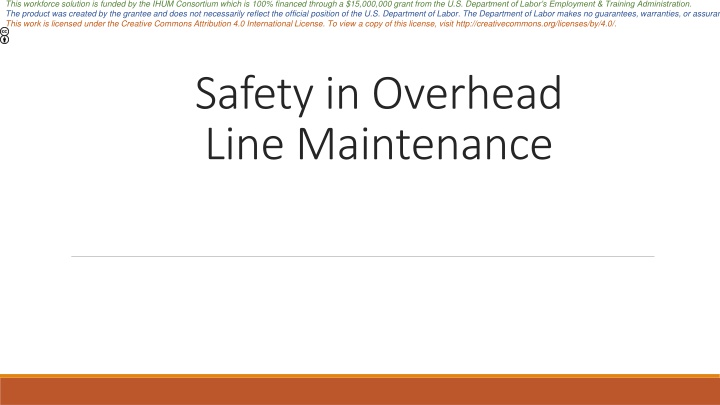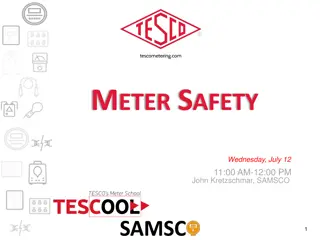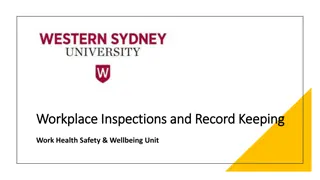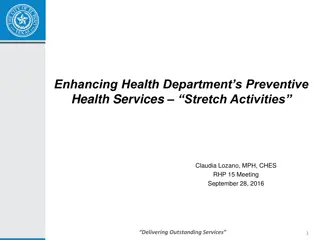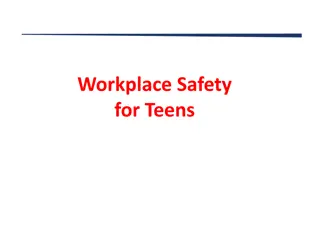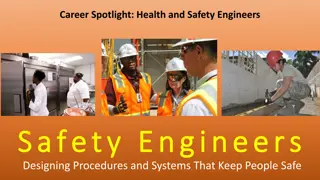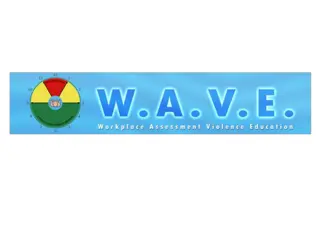Workplace Safety Awareness: Key Attitudes and Preventive Measures
Understanding the critical importance of safety in overhead line maintenance, this content highlights key attitudes towards safety, the causes of accidents and injuries, and ways to prevent them. Emphasizing the need for a safety-conscious mindset and proactive measures, it underscores the responsibility of all workers to prioritize safety in utility work environments. By recognizing and addressing risky attitudes, individuals can cultivate a culture of safety and prevent potential hazards, ultimately creating a secure work environment for all.
Download Presentation

Please find below an Image/Link to download the presentation.
The content on the website is provided AS IS for your information and personal use only. It may not be sold, licensed, or shared on other websites without obtaining consent from the author.If you encounter any issues during the download, it is possible that the publisher has removed the file from their server.
You are allowed to download the files provided on this website for personal or commercial use, subject to the condition that they are used lawfully. All files are the property of their respective owners.
The content on the website is provided AS IS for your information and personal use only. It may not be sold, licensed, or shared on other websites without obtaining consent from the author.
E N D
Presentation Transcript
This workforce solution is funded by the IHUM Consortium which is 100% financed through a $15,000,000 grant from the U.S. Department of Labors Employment & Training Administration. The product was created by the grantee and does not necessarily reflect the official position of the U.S. Department of Labor. The Department of Labor makes no guarantees, warranties, or assurances of any kind, express or implied, with respect to such i This work is licensed under the Creative Commons Attribution 4.0 International License. To view a copy of this license, visit http://creativecommons.org/licenses/by/4.0/. Safety in Overhead Line Maintenance
Introduction to Safety Maintaining overhead lines often requires physically handling conductors and equipment that are energized at thousands of volts High voltage can be extremely dangerous if it s not handled safely and properly Planning the work correctly, following all the appropriate safety rules and wearing the proper equipment will ensure a safe work environment is maintained at all times
Attitudes Towards Safety Safety must always be taken seriously; and it starts with your attitude Utility work activities are often accomplished in a crew environment. The safety and well-being of co-workers is everyone s responsibility Always be watching for potential hazards that could result in an injury to you or your fellow workers The safety of the general public is your responsibility whether you re traveling to a job or on the job site
What causes accidents and/or injuries? One of more of the following attitudes is always present when an accident or injury has occurred: Rushing hurrying due to demands of the job, work load or this could simply be self-imposed Fatigue working long hours; action and reaction times are longer Frustration this can be a result of something that has occurred on or off the job Complacency simply letting down our guard ( I ve done it this way a hundred times. )
How to prevent accidents and/or injuries The first thing to do is identify when one or more of these attitudes exists Once you ve identified when one or more of these attitudes exists, react to address it A correct reaction will result in: Start exhibiting the correct behavior (i.e. always wear your seat belt) Stopping the incorrect behavior (i.e. stop texting while driving) SAFETY IS WHAT YOU DO WHEN NOBODY IS WATCHING
Hazards Electrical hazards linemen are often exposed to include electric shock, flash burns or electrocution This is often a result of making contact with energized lines or equipment This first step in addressing hazards on the job site is to conduct an effective pre-job briefing During the briefing potential hazards are identified, crew members can ask questions and make suggestions regarding the job
Care and Use of Safety Equipment Personal Protective Equipment (PPE) includes: Hard hat Safety glasses Flame retardant (FR) clothing Boots with safety toes Rubber gloves (with leather protectors) Rubber sleeves Climbing equipment
Other Safety Equipment Hot line equipment includes: Line hoses Hoods Blankets Cutout and arm covers Fiberglass sticks: Switch stick Extend-0 Shotgun
Climbing Equipment The equipment used to climb wooden poles consists of: Climbers (with pads) Body Belt Fall Protection Strap Alternate Strap
Climbing Safety Before climbing a pole it should be visually inspected for rot, etc. Starting at the ground line the pole should be struck with a hammer then continue striking the pole up to 6 above ground line When struck with a hammer a rotten pole will emit a dull sound If there is any uncertainty regarding the condition of a pole, it should be dug out approximately 18 below ground line and a core sample taken from the pole Prior to climbing the pole inspect the sag in the primary conductors to make certain climbing the pole won t cause them to hit together (if possible, climb in line with the conductors)
